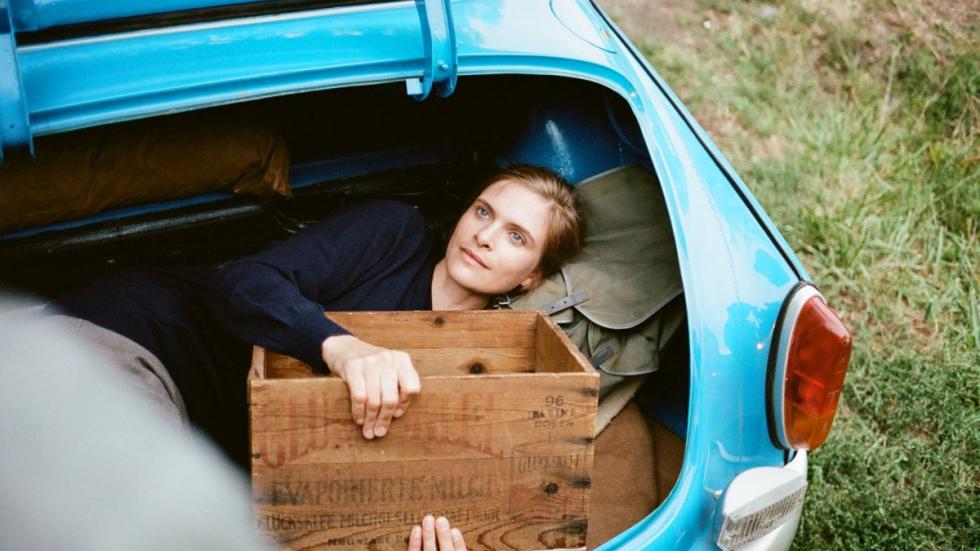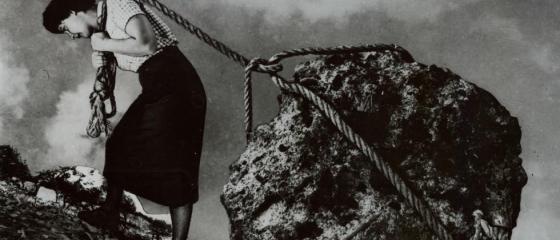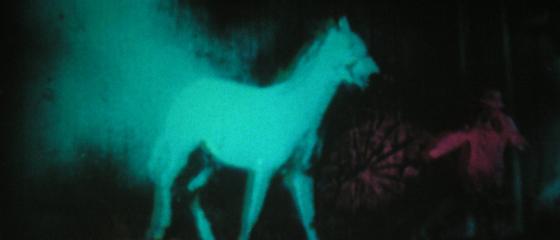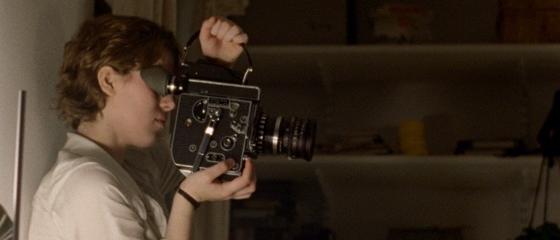We can think of the construction of a section as we would think of the action of painting a picture: each film selected would be a brush stroke. Bit by bit, the strokes gradually accumulate, one after another, different colours, shapes and textures. It would only be possible to contemplate and understand the painting by taking a certain distance in order to appreciate the overall work and unravel its composition. A composition that would talk about what and how people film in Europe in 2018, and about how it would be a portrait of cinema here and now. That is why, when we stop to contemplate the overall section from a distance, the first thing that jumps out are the various streams of nonconformity running through it. Apart from the formal, which would be the real raison d'être of this section, there is an nonconformity related to indentity, a healthy revulsion against the cataloguing and simple labelling of the human condition, which proves to be complex and unpredictable, through a group of films unafraid to travel sensitive roads.
One of these roads leads to youth, and in particular to a marginal youth, without valid references, whose adults are absent or ineffective. Seeing the picture formed by the films with sufficient perspective, this trend could be interpreted as a way of expressing the need for new centres of gravity, of disassociating oneself from established values, from power and from a status quo that in no way answers the most pressing concerns of young people. Thus we have an almost suicidal youth, trying to find a way of surviving and a place in the world created and ruled by others. In this regard, SHÉHÉRAZADE, by Jean-Bernard Marlin, shows us the cause of his nonconformity at the very beginning of his film, with black and white images of the migratory wave that arrived in Marseille in the 60s. A large human group that, as in many European cities, is put out of sight and marginalised in slums that seem destined to extinguish any spark of hope in anyone’s life. Places that end up becoming a trap for crime and misery with no way out, and tinge with fatalism the lives of the lovers who feature in the story, adolescents who are an impossible mixture of innocence and sordidness, and who have no option but to break with their origins and past in order to build a future for themselves. In the case of SAUVAGE, by Camille Vidal-Naquet, we don’t even need to know the origins of its protagonist, Leo –who sells his body on the street–, for it isn’t hard to imagine the nature of his despair. Prostitution in this case is more than a question of material survival: it seems that what is at stake here is emotional survival, an almost animal search for affection and human warmth, in a society that increasingly rejects implication with the other. Leo looks for a new form of closeness without finding valid formulas in the face of a longing impossible to express. The rules of affection and relationships are transgressed by a genuine, disconcerting emotion that endangers our hero’s very life. The search for affection and attention by the young protagonist of JUMPMAN, by Ivan I. Tverdovskiy, is also desperate. In the midst of a corrupt society and a dysfunctional family, his analgesia (inability to feel pain) is his only trump card for being accepted and acclaimed by his peers, and rebellion comes when he can no longer match the physical analgesia with the emotional analgesia necessary to survive in that world.
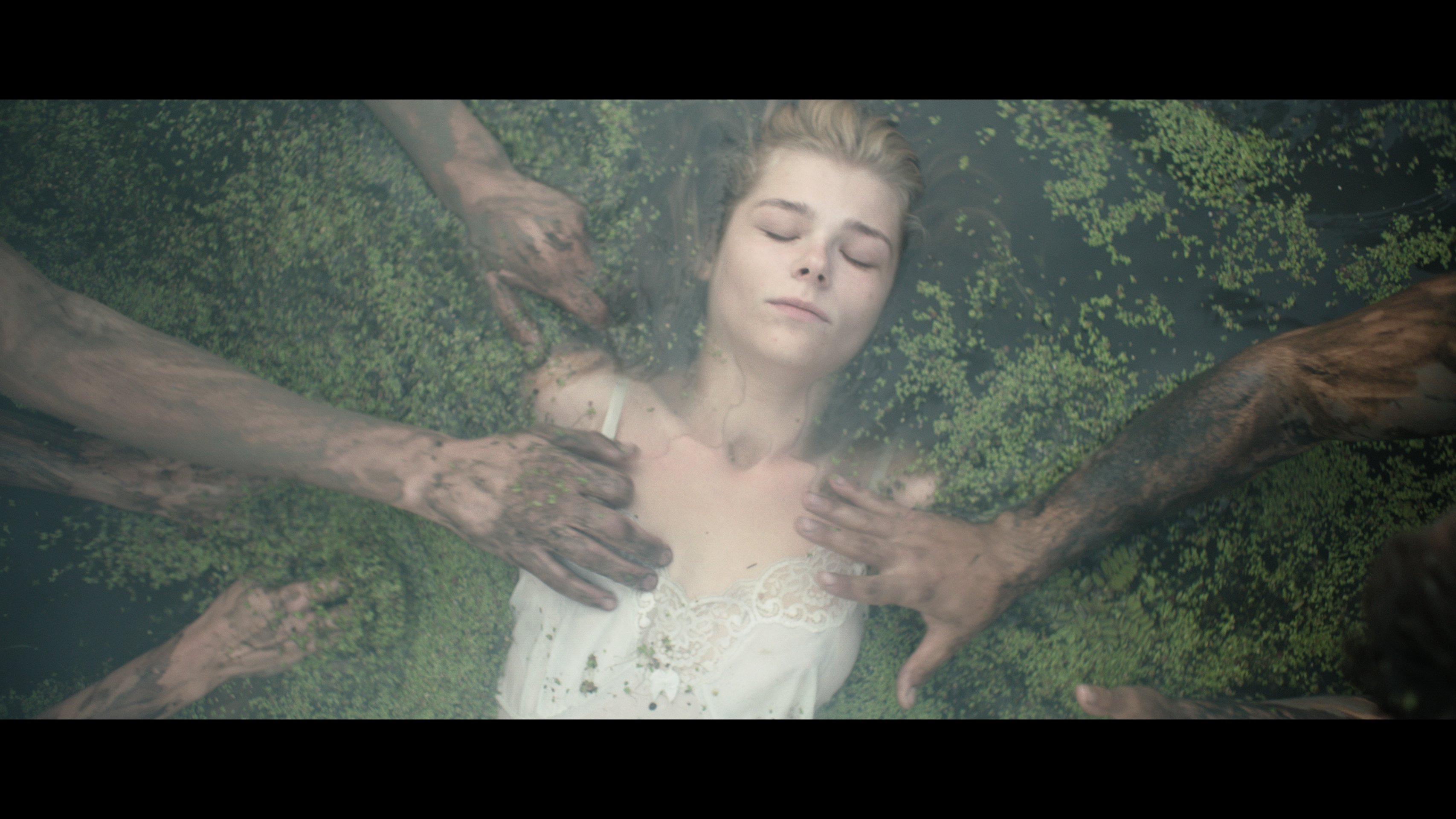
DEVA, by Petra Szöcs, shows a young girl abandoned (by her parents, in an orphanage) and who as a reverse of that callousness is destined to stand out because of her appearance, for she is albino. In the context of that city –in which the bricks of her strength are held together by the remains of a murdered woman- what really wakes her from that accumulation of superstitions that surround her is a new reference, a young carer, who breaks the spell of the adult world, and of an invisible but patent oppression. Deva in some ways connects with other films in the selection which try to revise or subvert the ways in which women and their concerns are portrayed in the cinema. The story told in ALL GOOD, by Eva Trobisch, deals with a subject much talked about in recent times: the famous #MeToo, that is, awareness of the limits of consent in sexual relations. The film is run through by an underground current of unease, that of its protagonist who, as society has done until now, decides to cover something that is clearly destabilizing and harmful with a layer of normality. In the case of SOMETHING IS HAPPENING, by Anne Alix, the actual structure of the film, entirely free and open to randomness like life itself, breaks the dominant narrative outlines not only at a formal level but also at what is understood as the established, standard story of what the life of two adult women is supposed to be. Here, one of them has freed herself of every social tie, while the second loses those bonds which give meaning to her life and she needs to redefine herself. It is the meeting with the other, with migrant and worker realities which define and round off that opening
In our painting-portrait of European cinema in 2018, there is another concern which is that which leads to the resignification and updating of the forms of generic, cinematic and literary stories, as a sophisticated way of showing dissension. In THE TREE, by Andrè Gil Mata, the splitting of Borgian time, and the aesthetic choice that evokes the pictorial representations of stories and legends, seems to recreate a world of fantasy. Except that all this device works on two levels: that of the immersive quality of the story, and that of the existential, political metaphor: two wars (the Second World War and the siege of Sarajevo) meld into a single abstract war, in a setting that is also abstract, that shows up the cycles of history and basic human motivations.
On the other hand RAIVA, by Sérgio Tréfaut, mingles the film codes of the western and of cine noir to imbue it in the class struggle in the Portuguese countryside, giving a powerful, immersive film experience. The use of space and time, and of the devastated Portuguese rural landscape, mixes in equal parts the genuine identity of the territory with the formal codes of the Western, in a story about the loss of innocence, revenge, survival and resentment. MARIPHASA, by Sandro Aguilar, can also be read as an updating of the forms of cine noir. The daring use of darkness, which is also used to suspend the characters in a liquid, imprecise space, the enveloping sound and the elegant, radical editing, generate a kind of atmospheric mystery story, where the sensorial and emotional immersion is more important than the twists in the plot and the dramatic effects.
ANNA’S WAR, by Aleksey Fedorchenko, picks up the essence of Russian fairy tales (which are themselves merciless stories), through its structure of days-chapters, its use of lighting and the recurrence to children’s imagination, using all these resources to tell a story of survival set in the Second World War that shows the most savage side of the resistance. Linking up with what was said earlier about nonconformist youth, WHEN THE TREES FALL, by Marysia Nikitiuk, shows the ways in which a little girl and a teenager fight against the greyness and ignorance in their most immediate surroundings. Passion and imagination, expressed in dreamlike images that also link with legends and fairy tales, are their ways of escape, the only construction possible of a world of their own on the fringes of the coarse, outdated way of life of the adults.

In that sense, science fiction and fantasy are also incorporated into this great fresco as an element that questions the working of things, in particular views that focus on genre conventions from the perspective of auteurist cinema or from an experimental perspective. In IN MY ROOM, Ulrich Köhler sets out an almost classic story of the apocalypse and its only survivor (dealt with by commercial cinema on various occasions), in which the twists and turns of subsistence in extreme conditions are mingled with the redemption of the character, and with the process of getting to know himself again which says a lot about our way of relating in society. With very different intentions and a formal approach, LETTERS TO PAUL MORRISEY, by Armand Rovira, starts from a filmic-epistolary tribute to the American filmmaker in order to establish a series of fantastic stories, a kind of avant garde Tales from the Crypt shot on 16mm in black and white, with references that range from Bergman to Marker and with ambitions that verge on existential satire.
Without going so far as to take up the position of genre revision, DEAD HORSE NEBULA, by Tarık Aktaş, continues the line started by The Tree in the direction of life and its cycles, and the connection with one’s own childhood, in a tone that also has a lot of dream and mystery in its elliptical treatment of memories and experiences. Except that this time reflection is geared more towards connections with nature, the indissoluble relationship between life and death, and the return to the atavistic roots of existence itself.
Another vein that also travels through the Festival’s programme (not only in this section) is the intermingling of the personal and the political. The circumstances in which the characters have to live in both ADAM UND EVELYN, by Andreas Goldstein, and YOU HAVE THE NIGHT, by Ivan Salatic, invade and condition the meaning of their personal lives, and therefore also modify their identity. Adam und Evelyn travels to the moment of the fall of the Berlin Wall, which coincides with the crisis in a couple, and with a journey from the East to the West which becomes defining for their lives because of the fact of happening at that precise moment. The problems typical of life together are mixed with the despair of a world, and with the impossibility of returning to a previous state of things for reasons of force majeure. And with the adoption of a life that has more to do with the capitalist family structures of the world that awaits them. The luminous tone with which Goldstein narrates convulsive times contrasts with the nocturnality of You Have the Night, which aligns its tone with the economic and social despair that ends up invading relationships in the town in Montenegro battered by the bankruptcy of the shipyards, by the void that is left when the working class is no longer necessary, and by the life void created after the ephemeral promise of capitalist prosperity. Through the story of a woman, and of her affective ties, we see how the “macro” (companies, economy, what appears on the news) is related to the "micro", that is, to personal things.
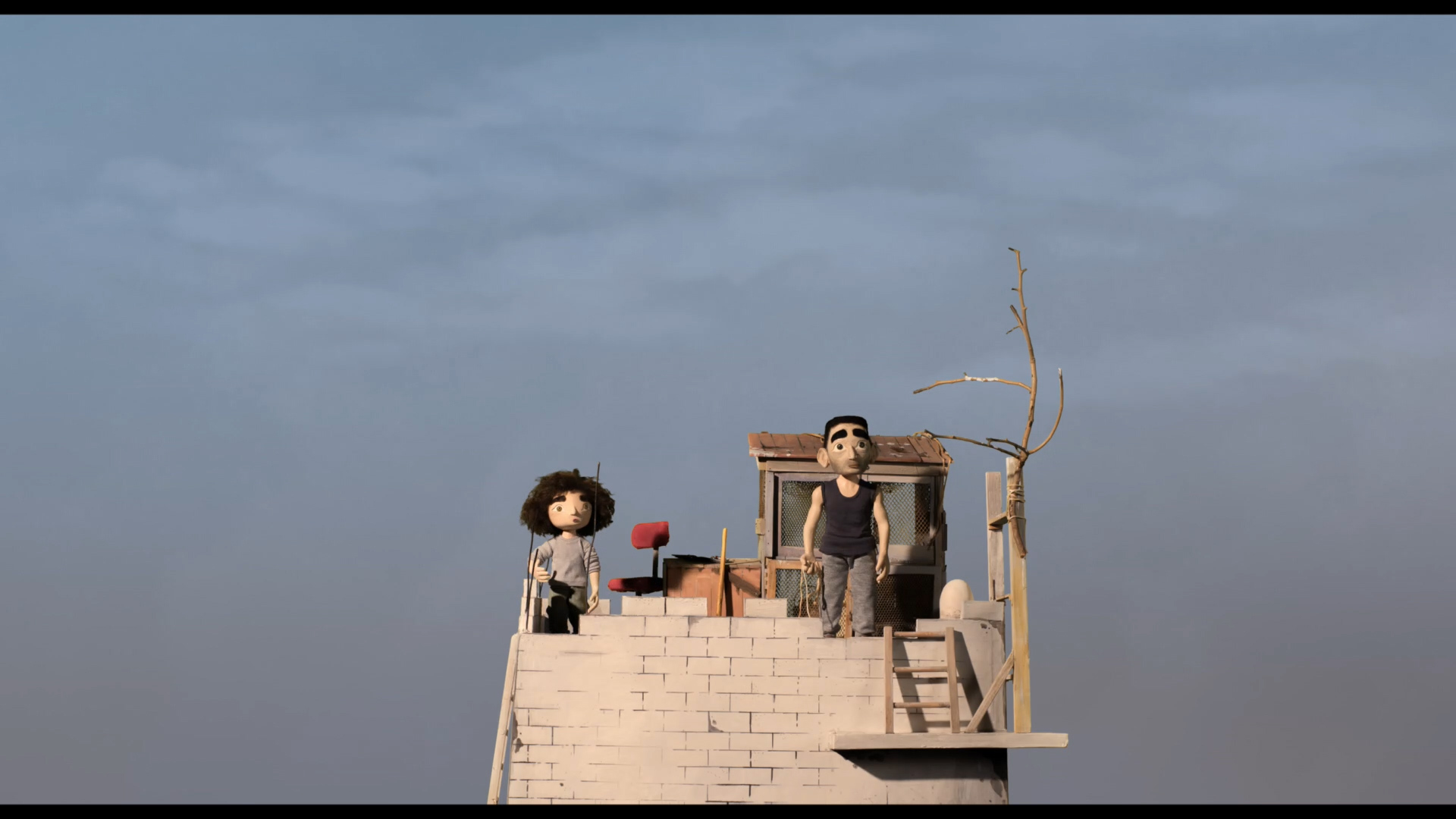
Finally, that same questioning look in which there is no room for the obvious and which tries to position itself on the human scale is transferred beyond the borders of the continent, to try to build bridges with distant conflicts about which we only have proof from the (mis)information by the media, as is the case with Palestine: a direct consequence of the Second World War, a European conflict. Both SAMOUNI ROAD, by Stefano Savona, and THE TOWER, by Mats Grorud, understand that new resources are needed to talk about the unspeakable and it is perhaps for that reason that animation plays a fundamental role in both projects. In Samouni Road, animation is used to fill the gap of what has not been recorded, and it does it in two ways. On the one hand, to describe the facts in a pure narrative sense, and on the other, to transmit the emotional intensity, the terror, the disorientation and the senselessness of the Israeli attack on this family in a suburb of Gaza. In the case of The Tower, Grorud links the story of various people in a refugee camp into a single fiction, in which anything referring to the present is animated by stop motion, and that dealing with the past is done with two-dimensional animated drawings. And he channels it through a girl of 11, the protagonist. Both factors, the animation and the focus of the story, allow this tale to transcend the usual audiences and channels, opening the possibility of knowing and understanding that reality. Seventy years of life marked by the wound of dispossession, in a permanent temporary situation. Both Savona and Grorud also consider what their role is from Europe, and as creators, with regard to all this.
This general review acts as a description of the portrait of nonconformity which has been painted by the New Waves section in 2018. The strokes are diverse and multi-directional, but they share an inquisitive spirit that isn’t afraid to question what may be the most suitable way to channel that impossible story which is European identity (and the nature of the human and the social) in these present times.



